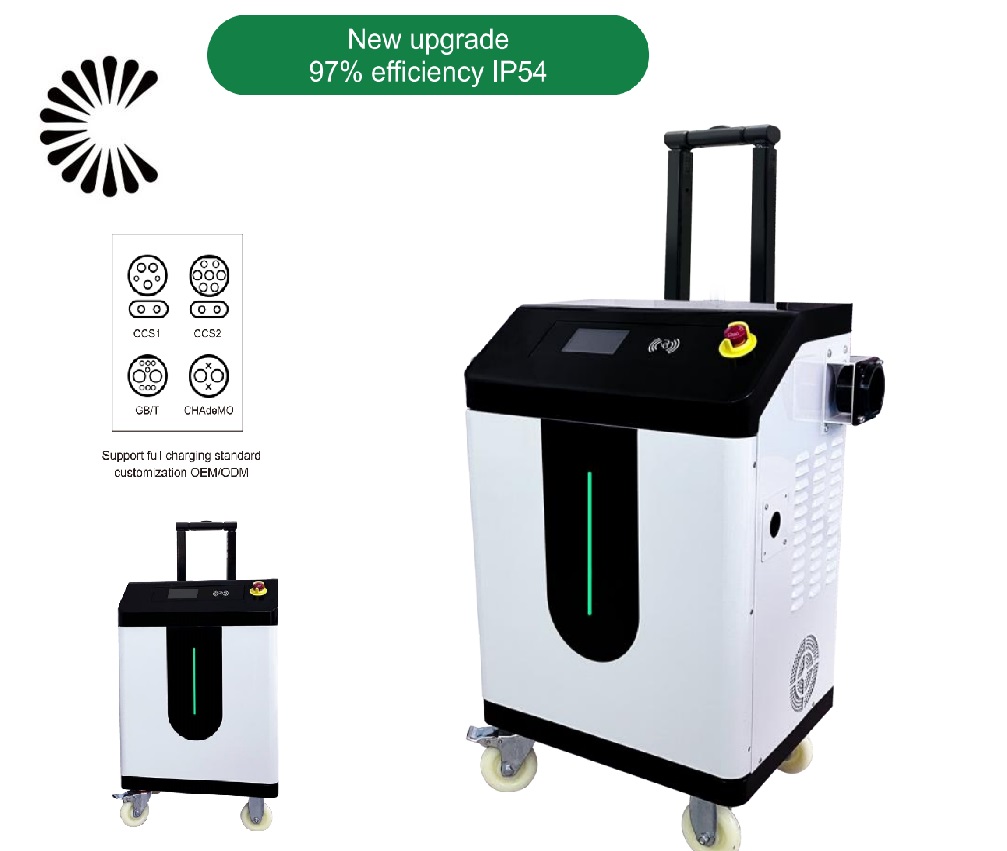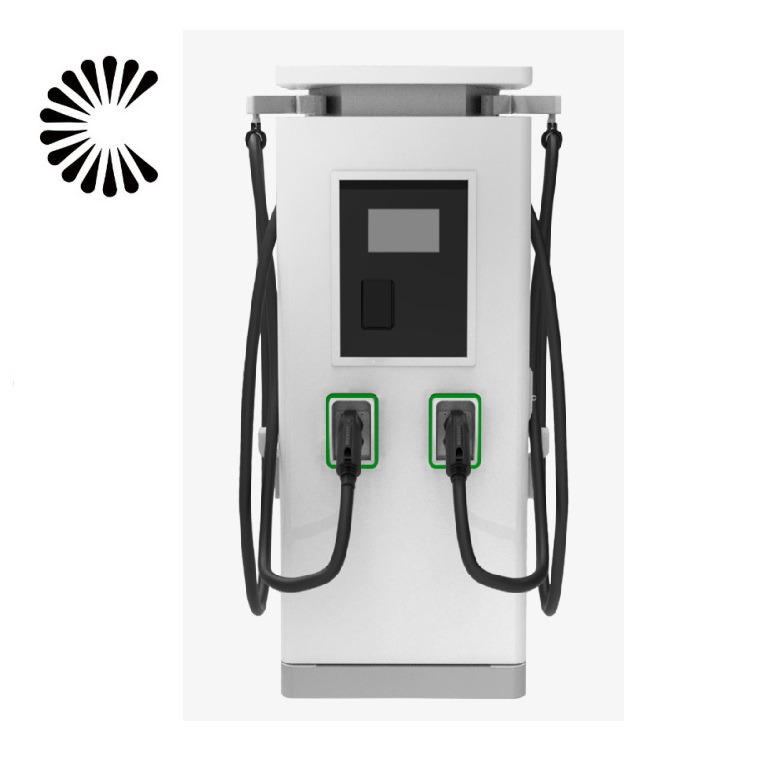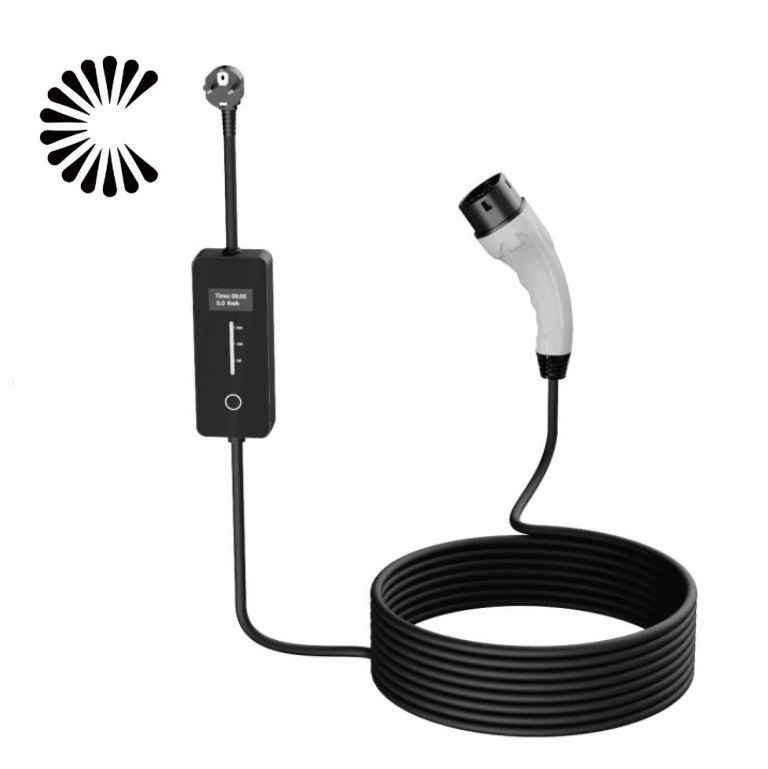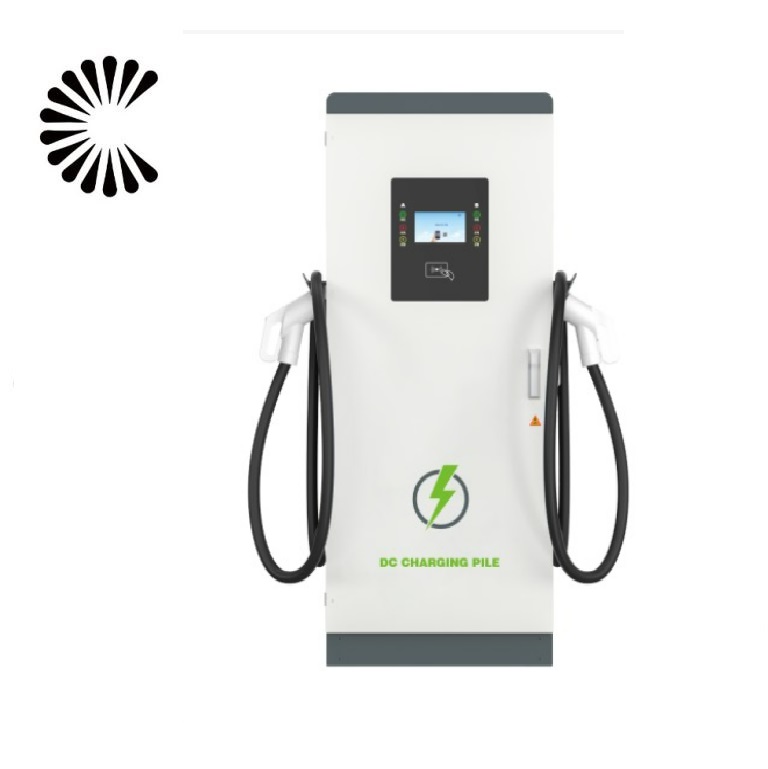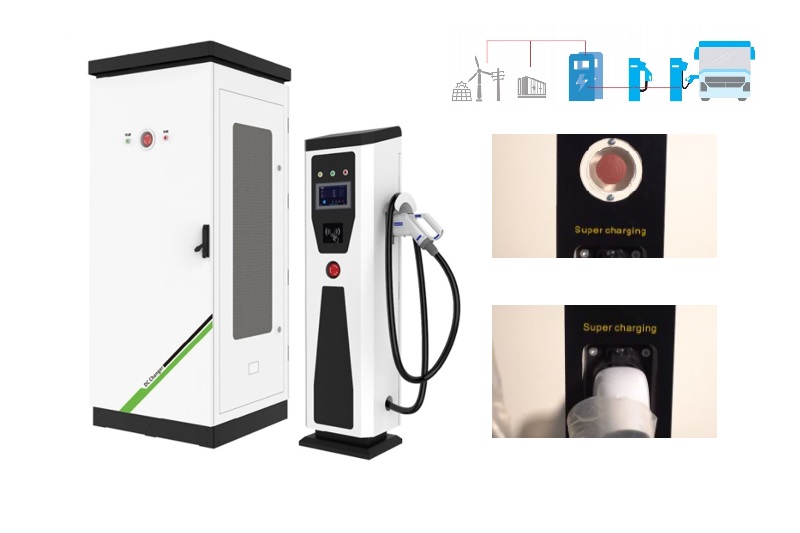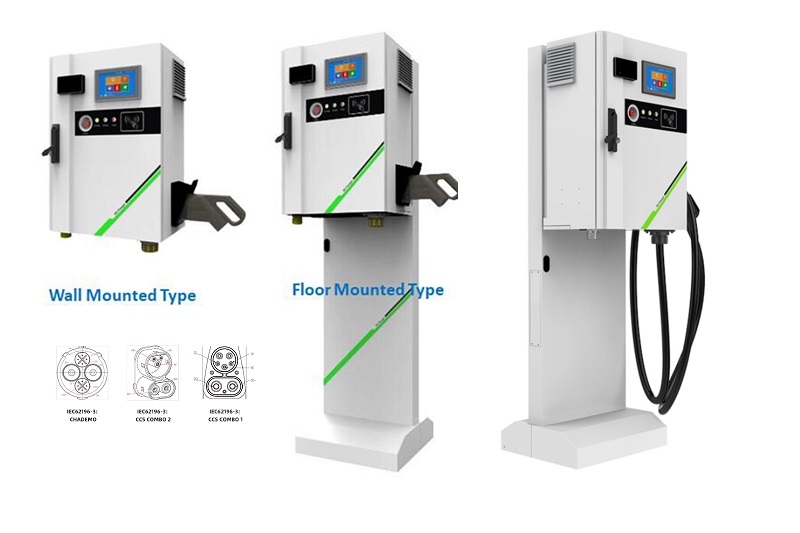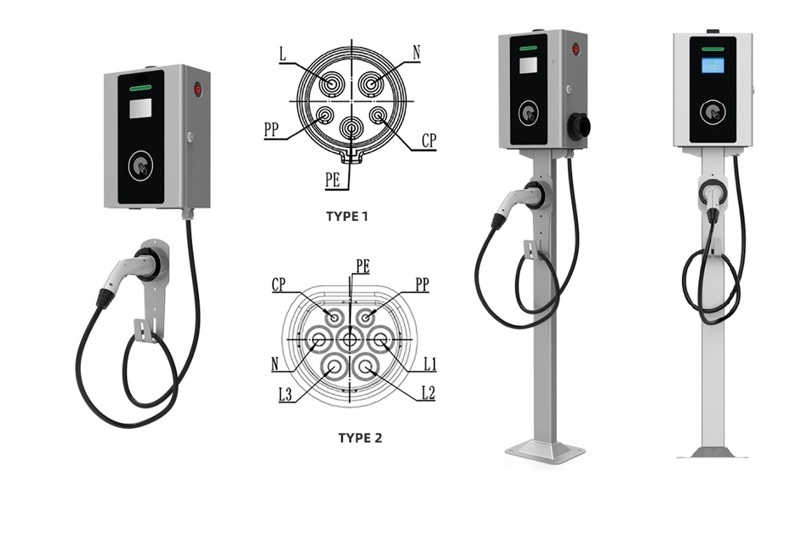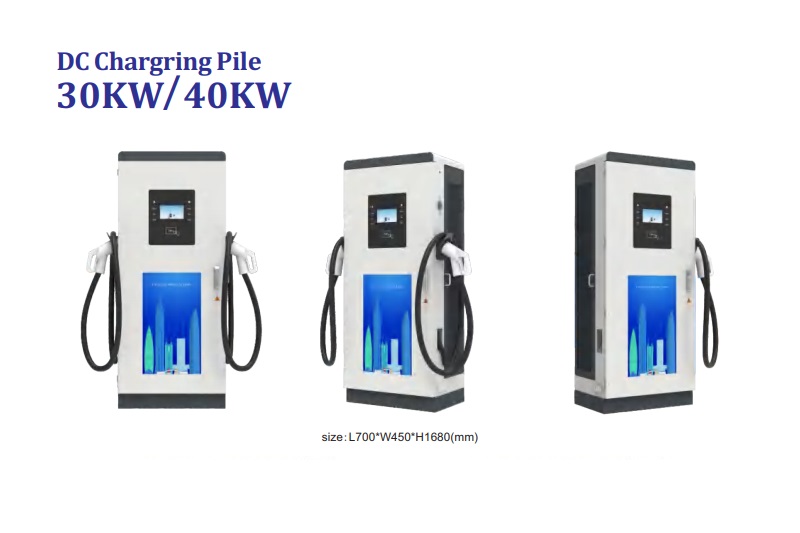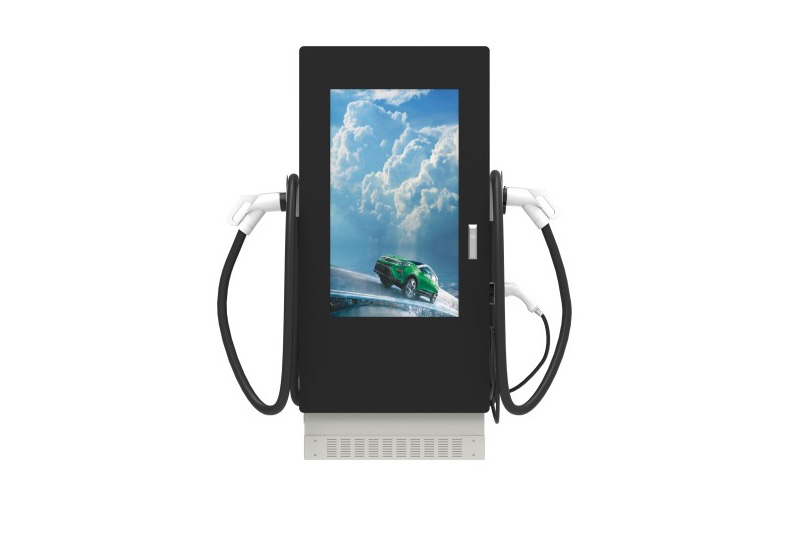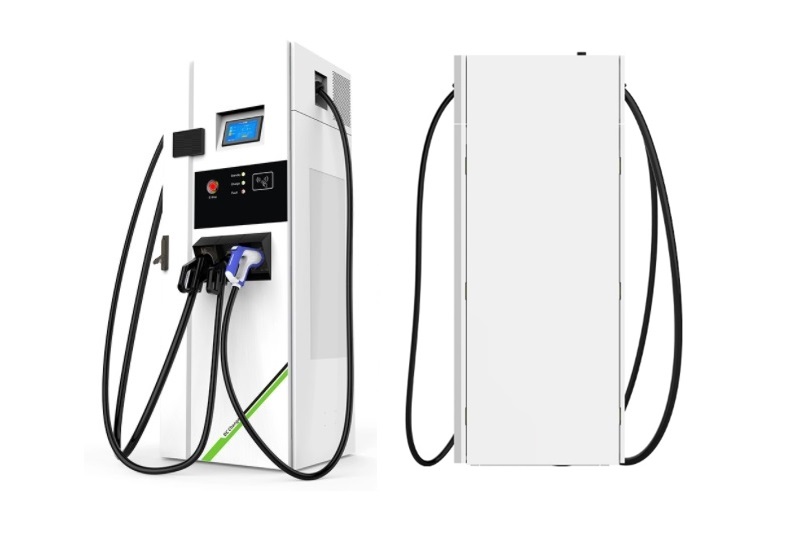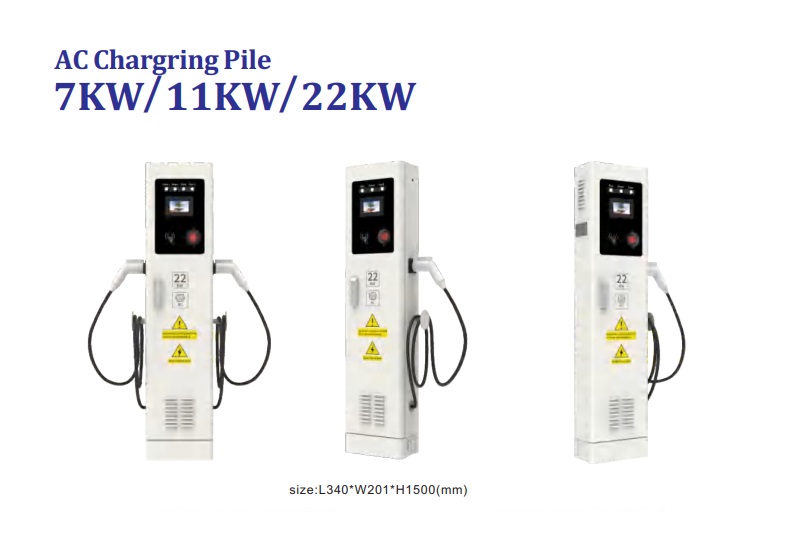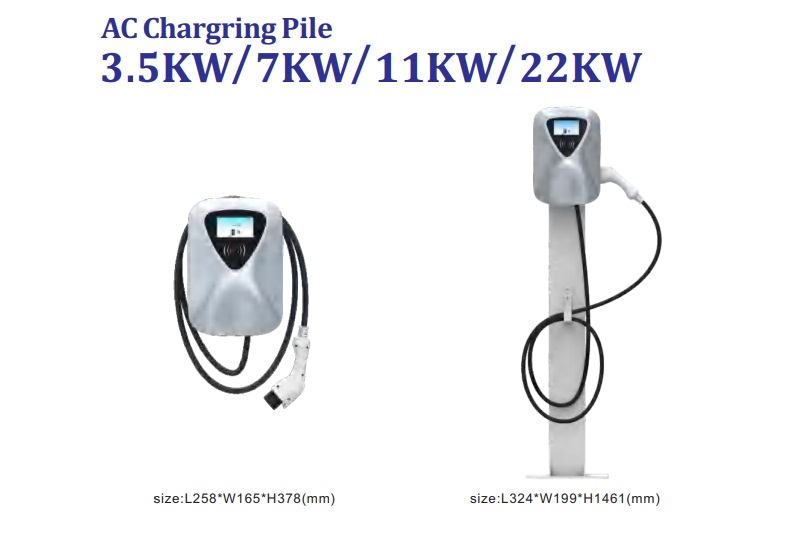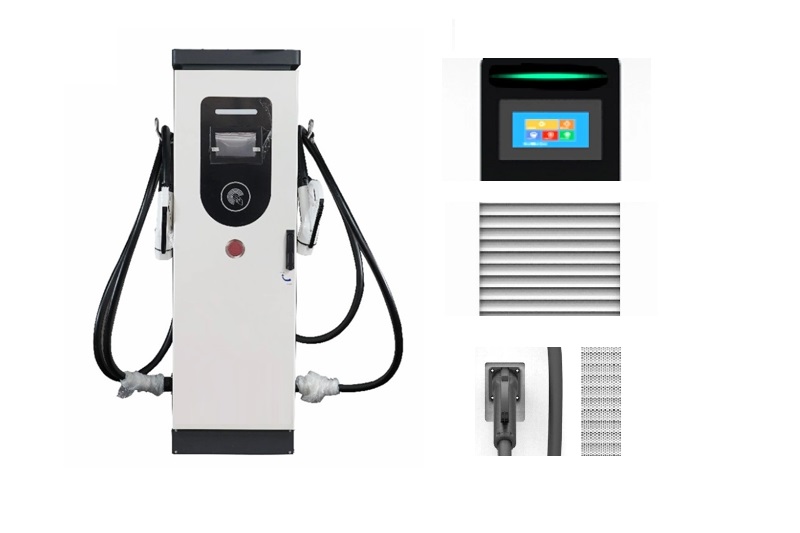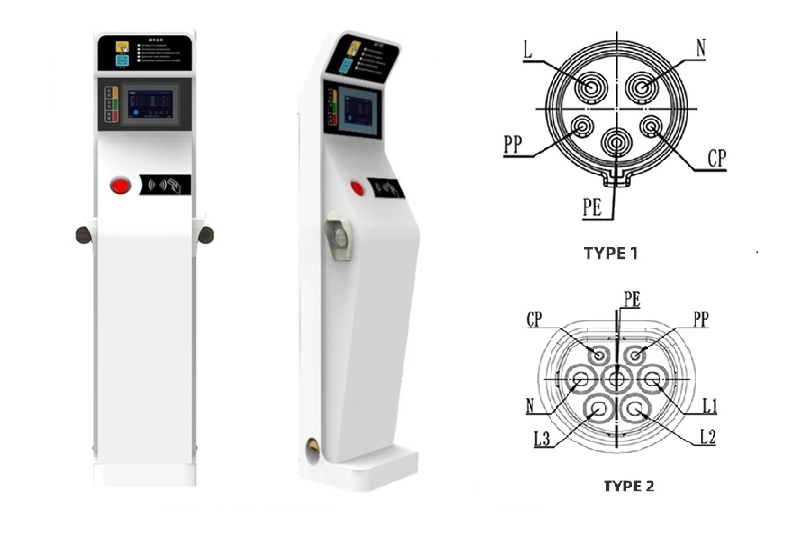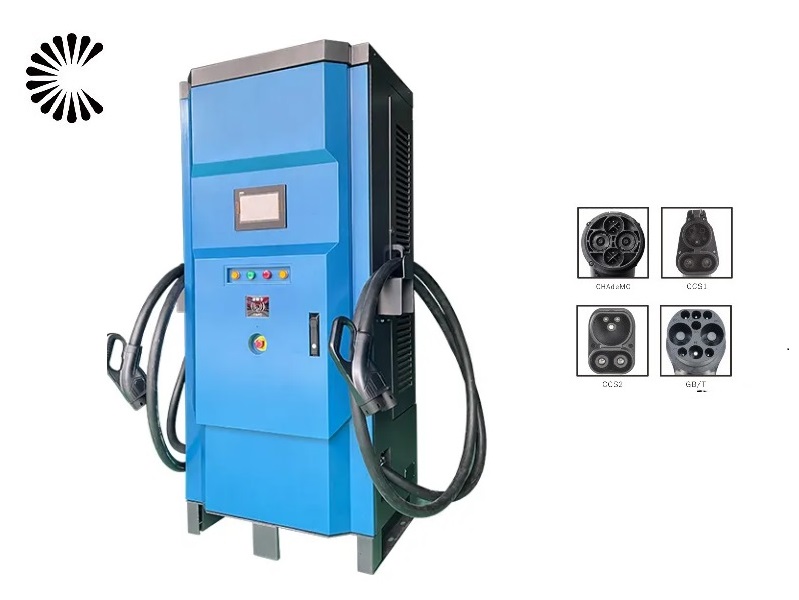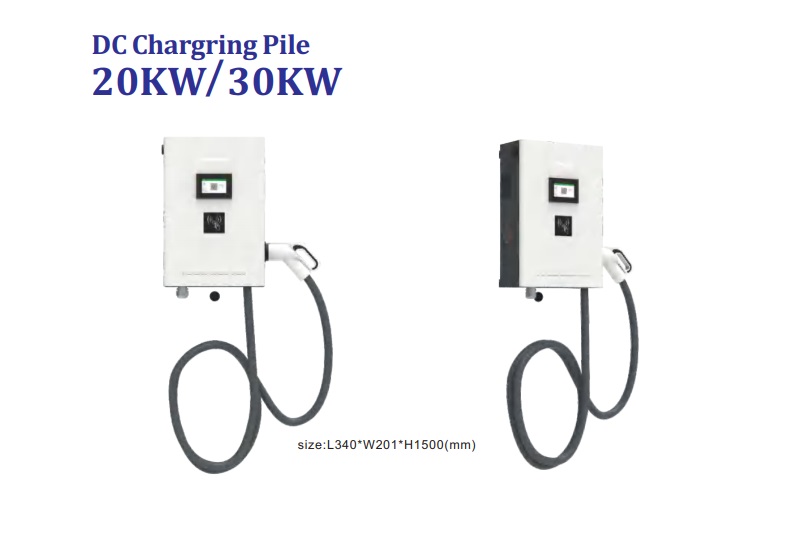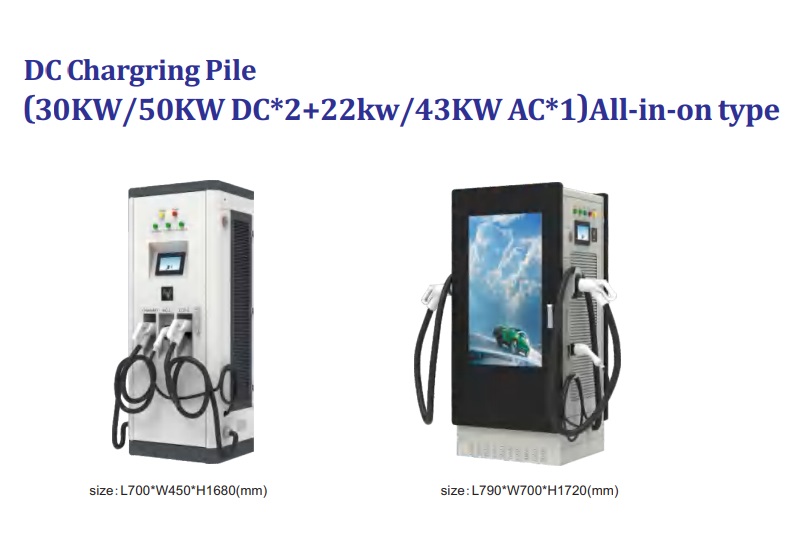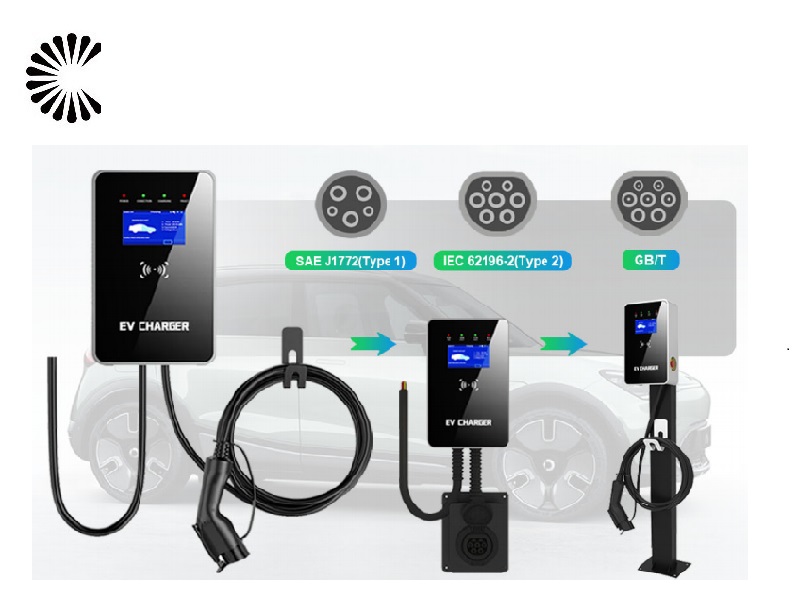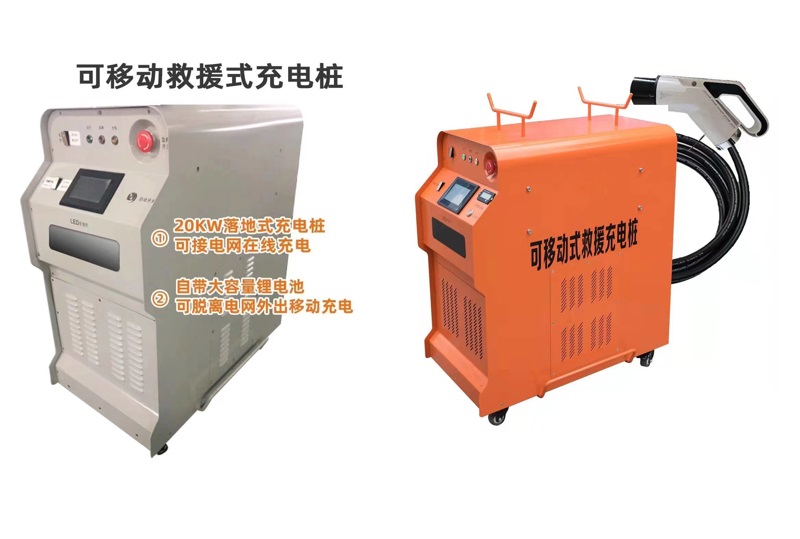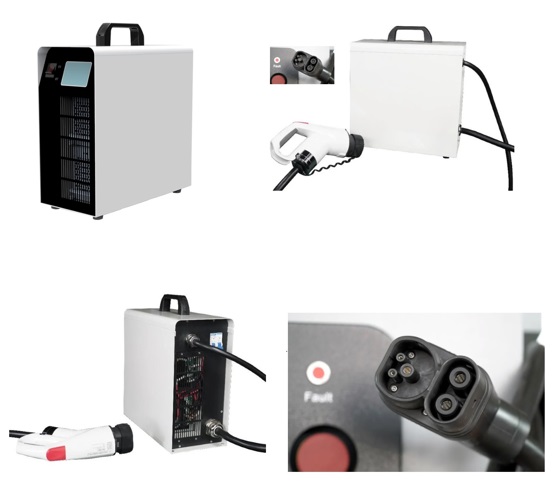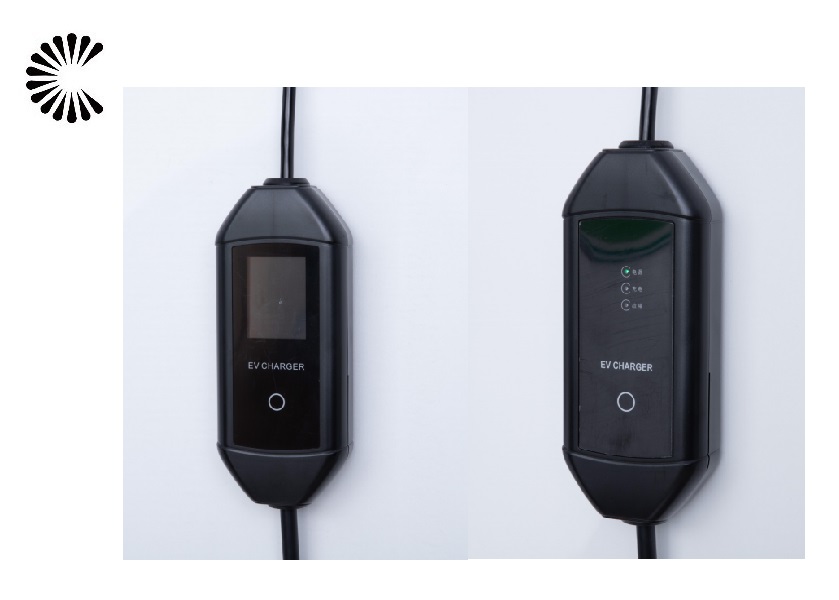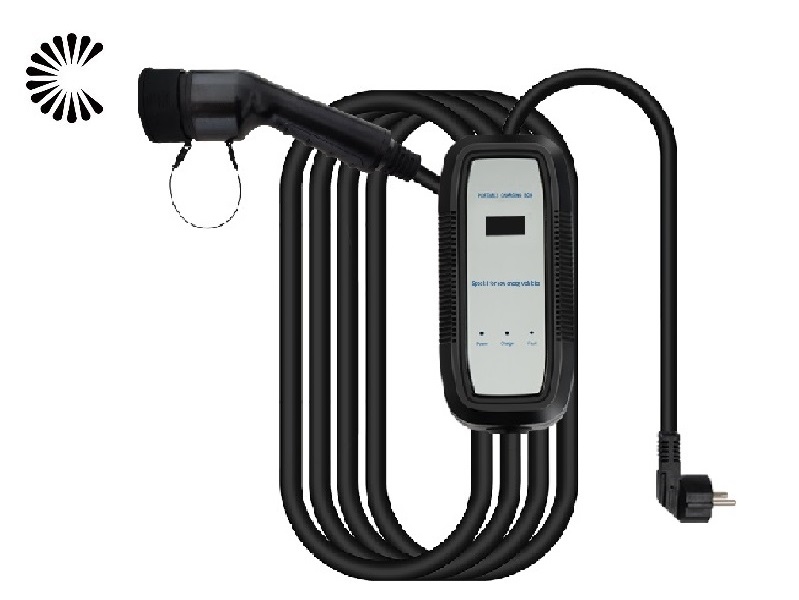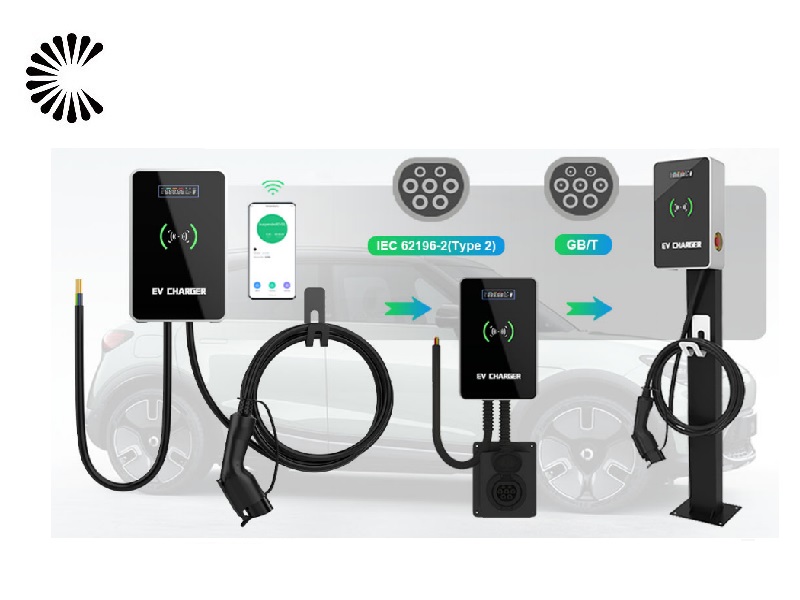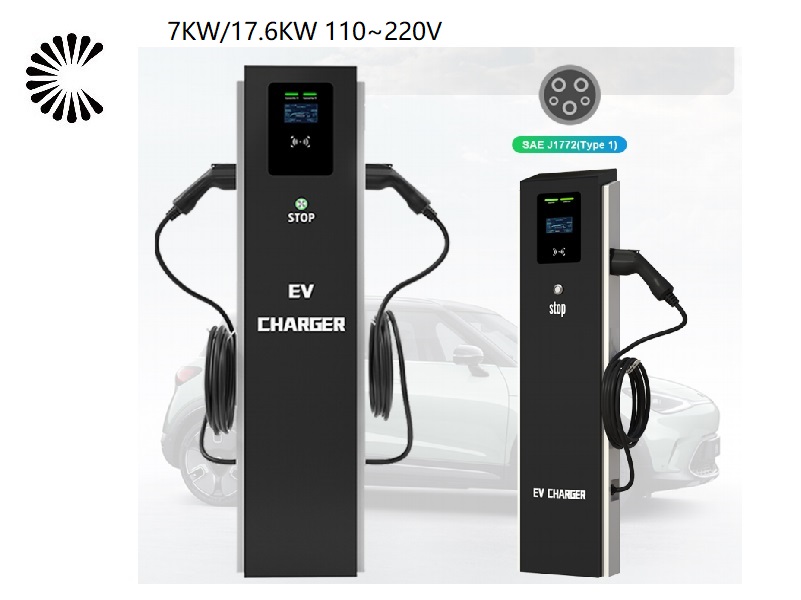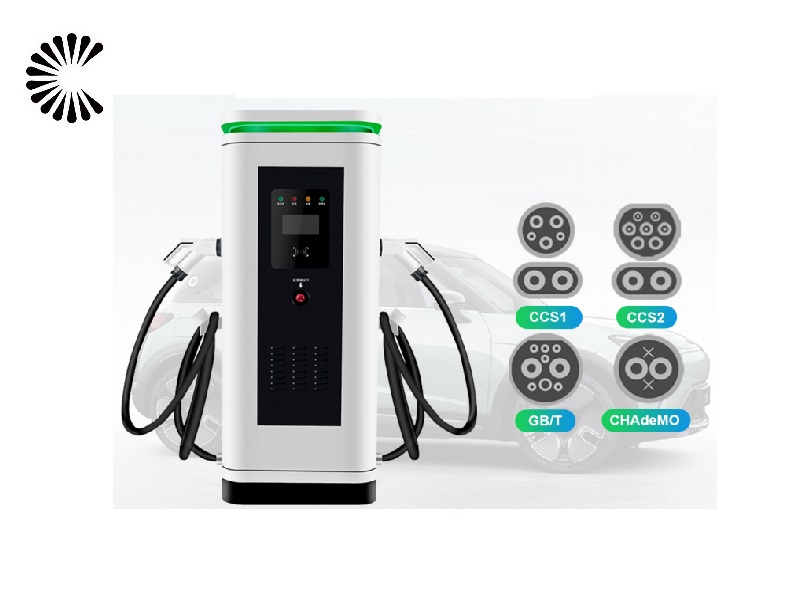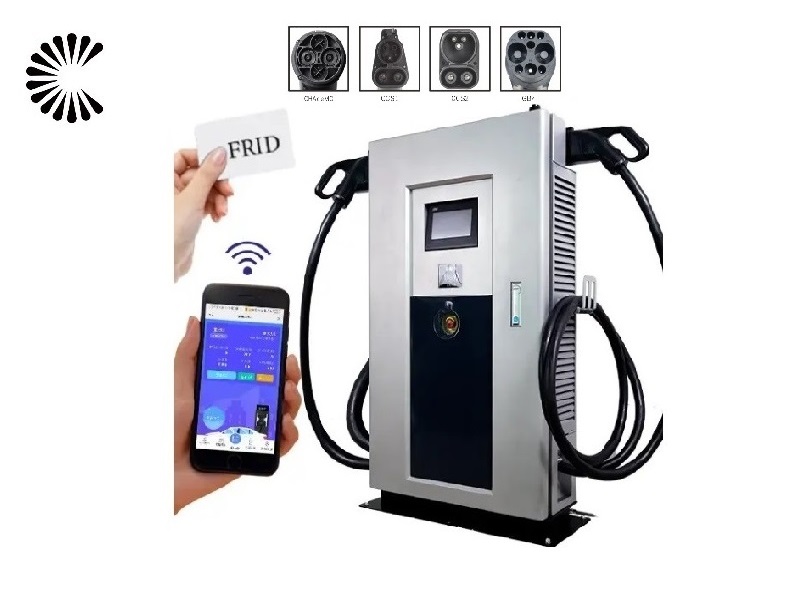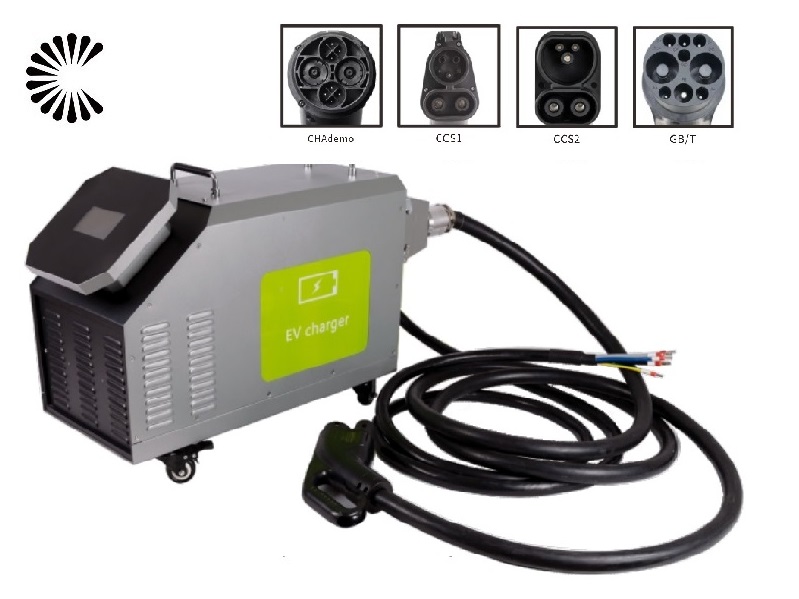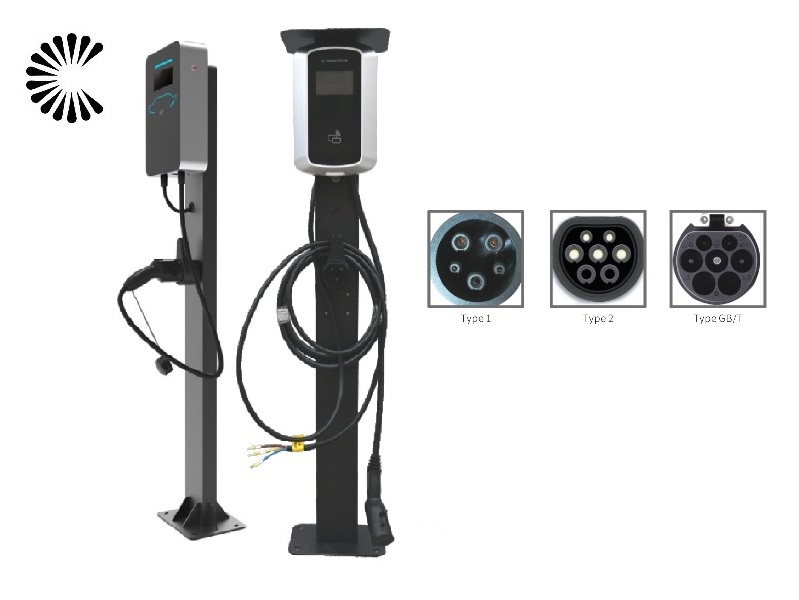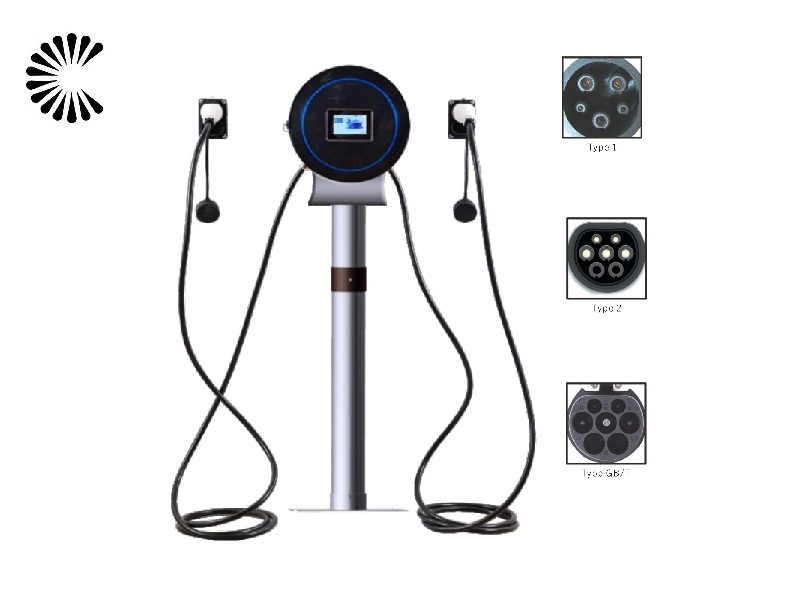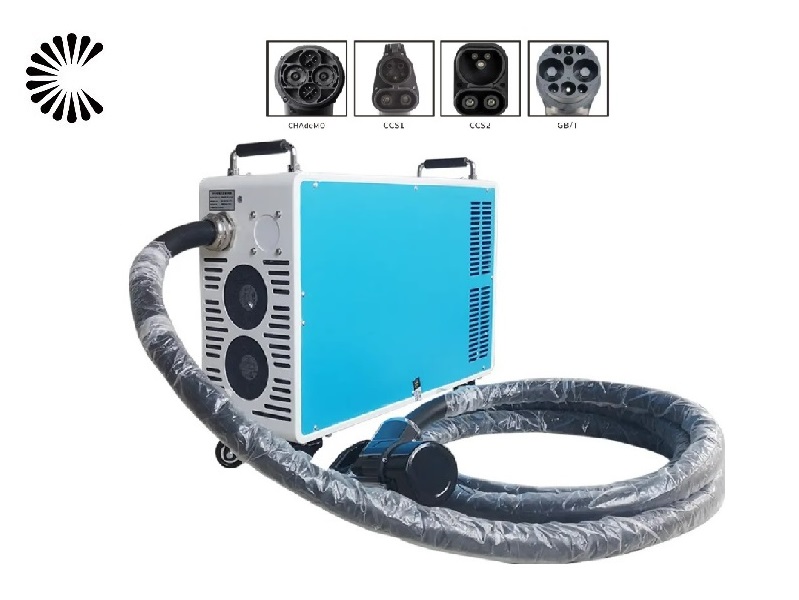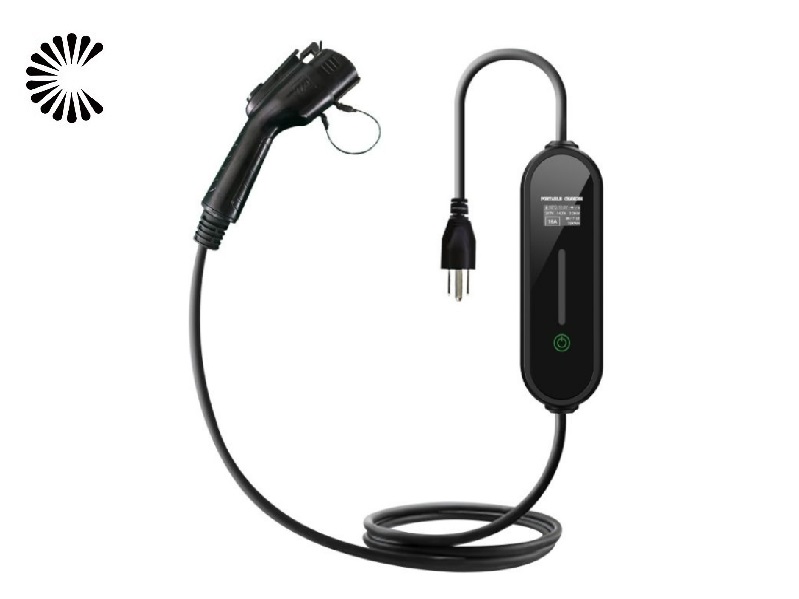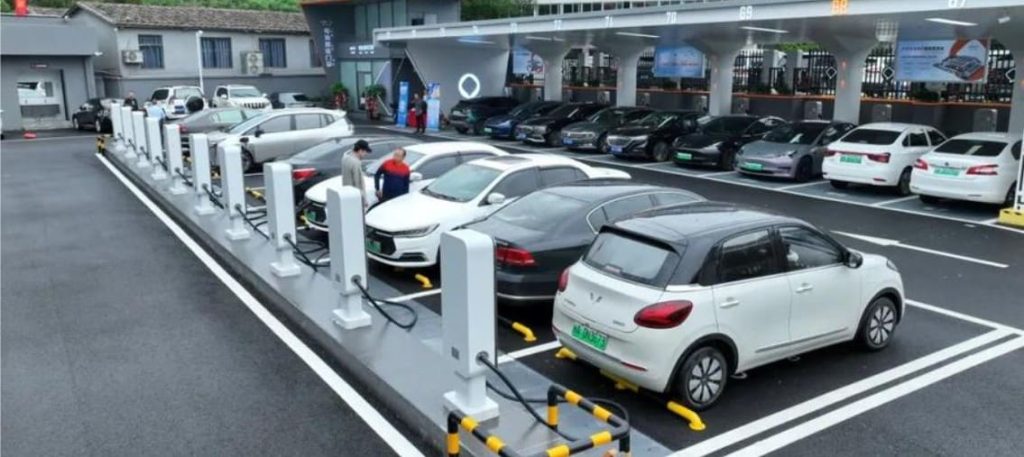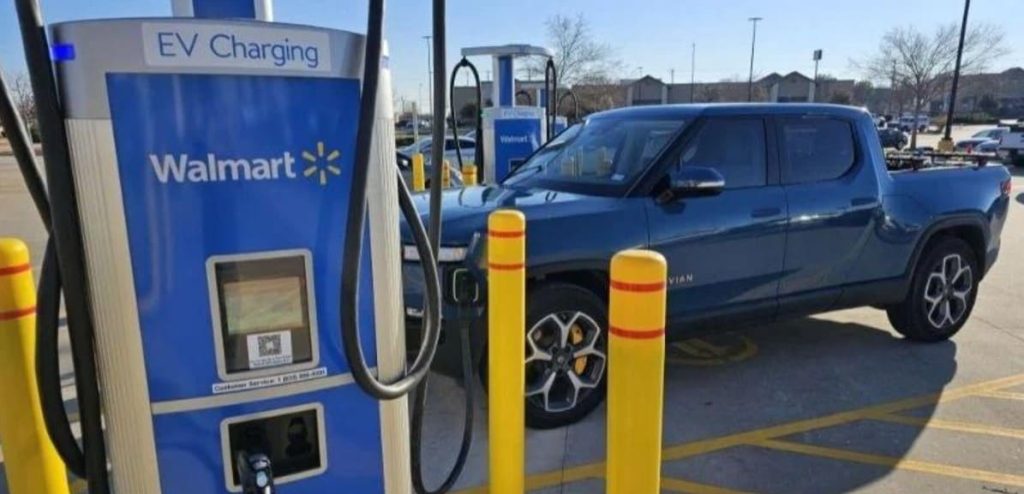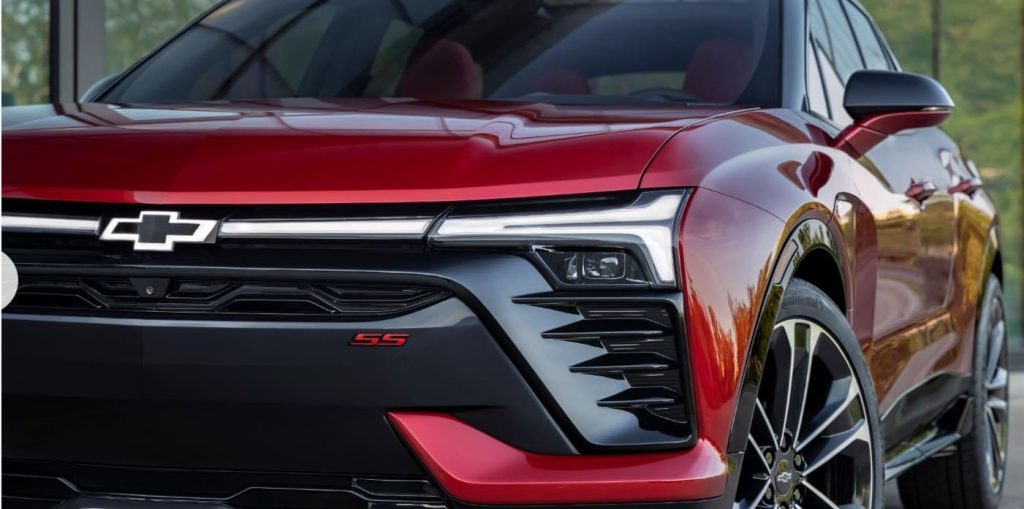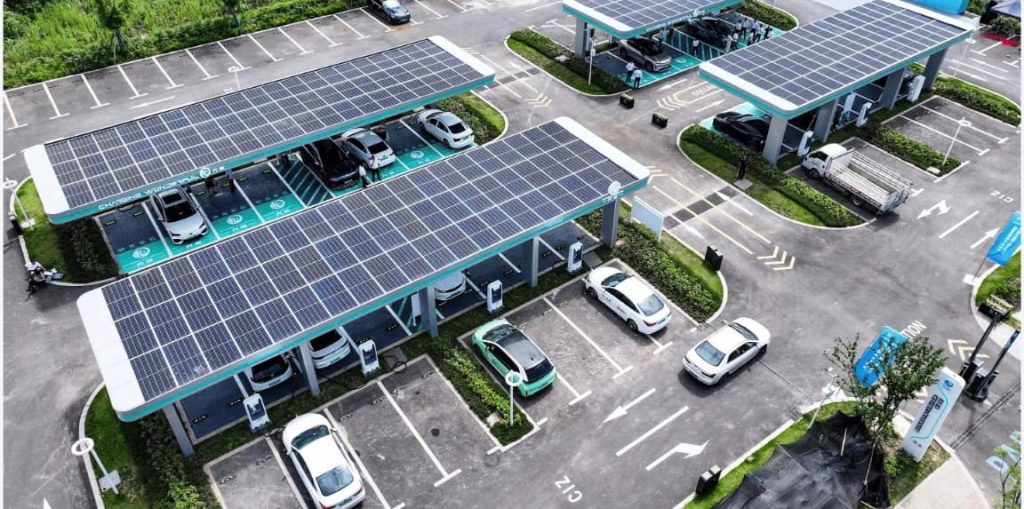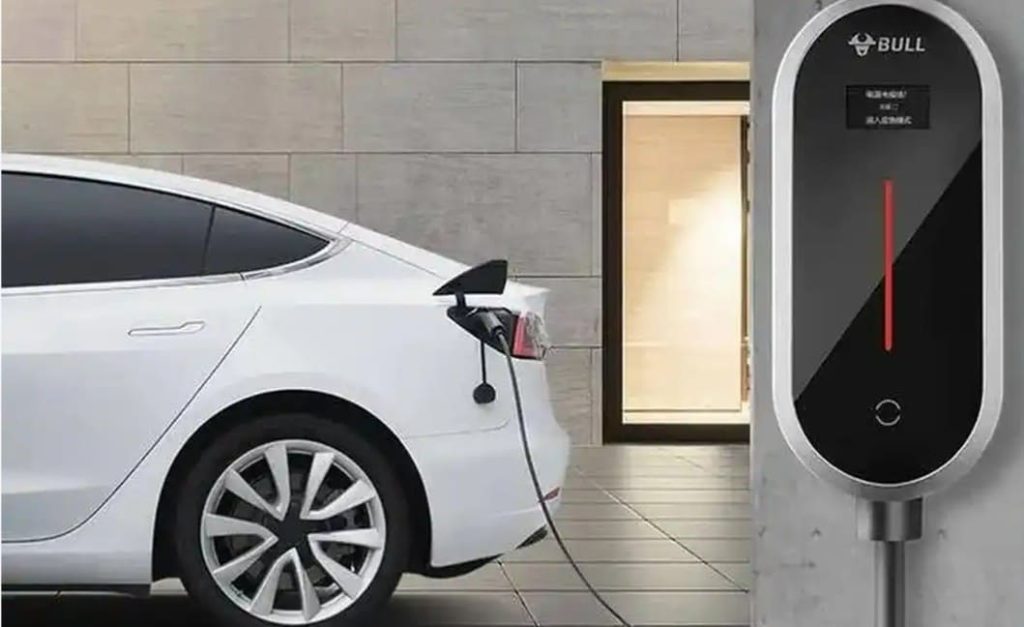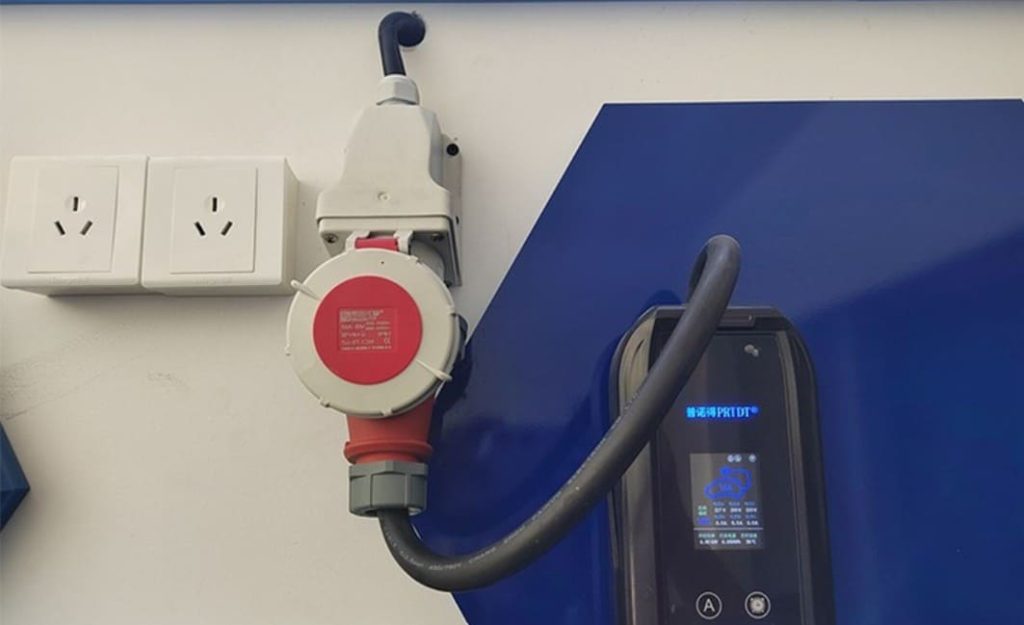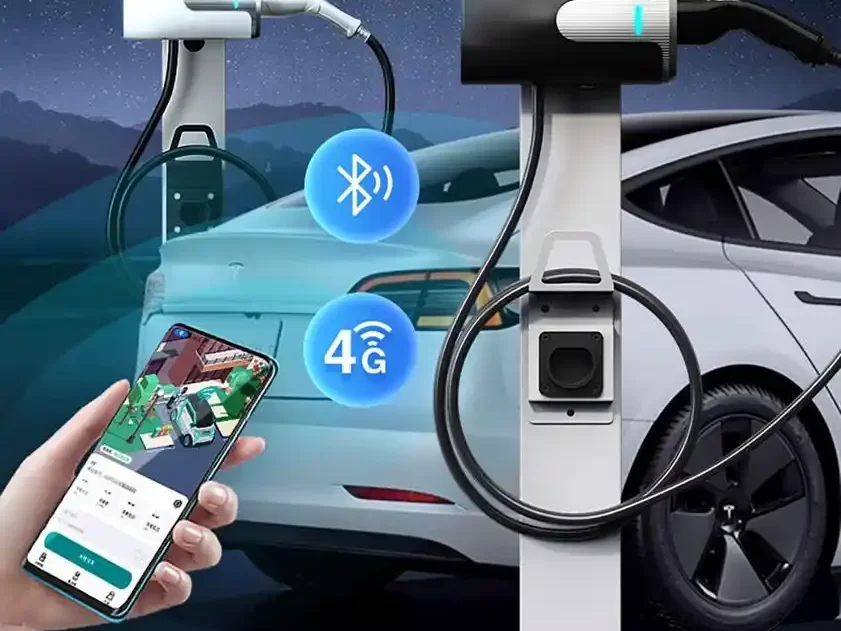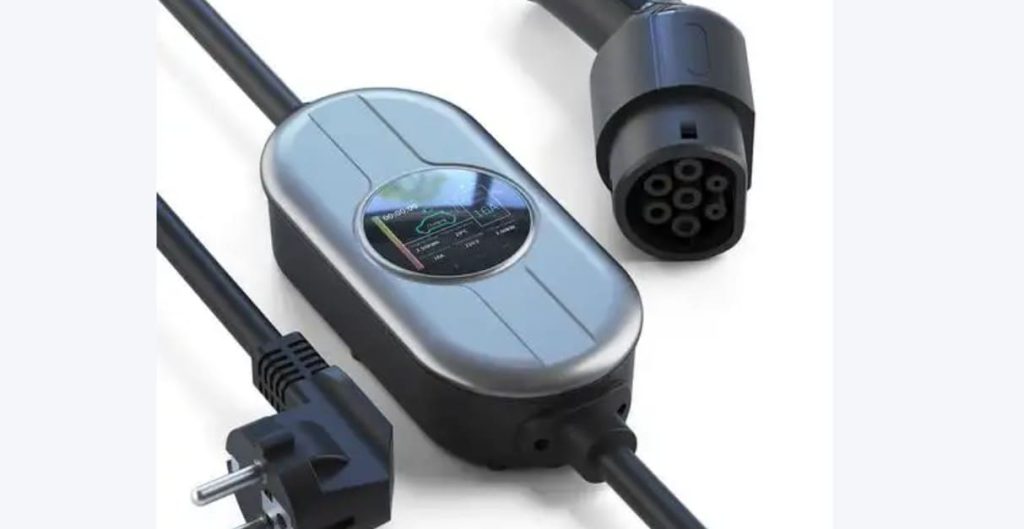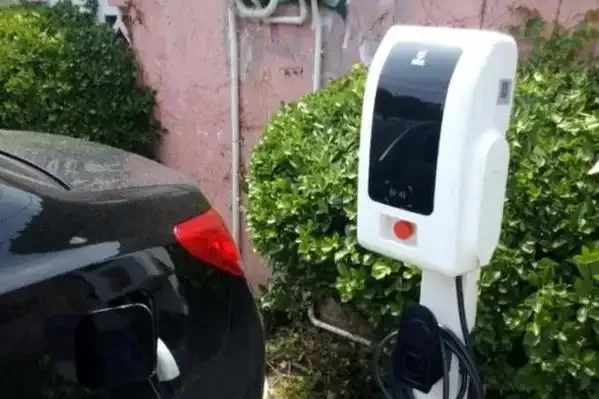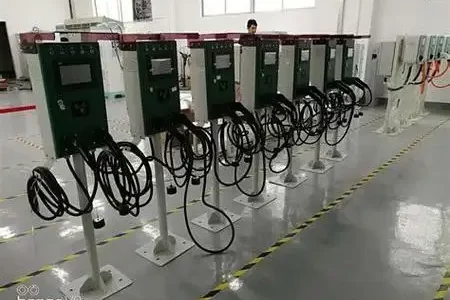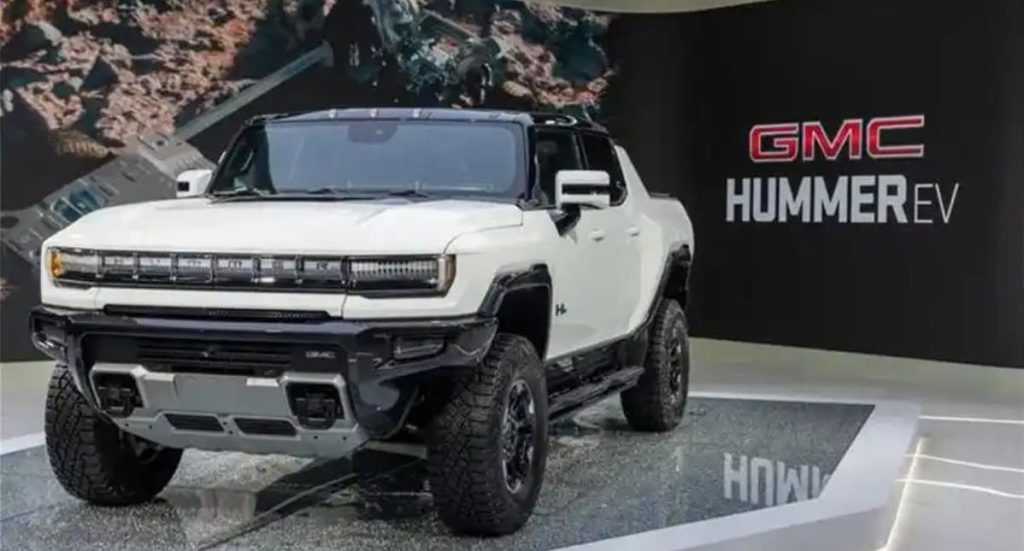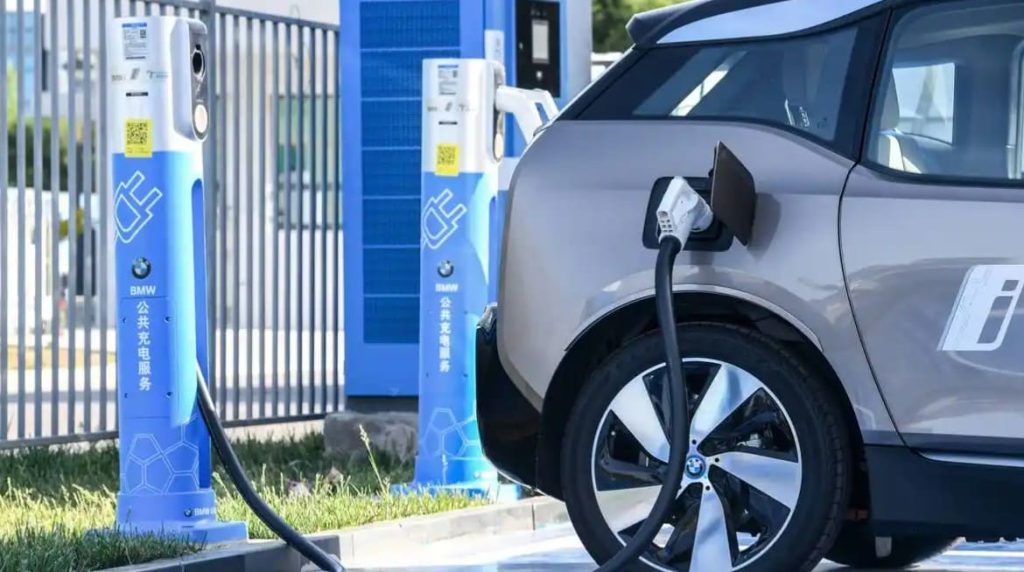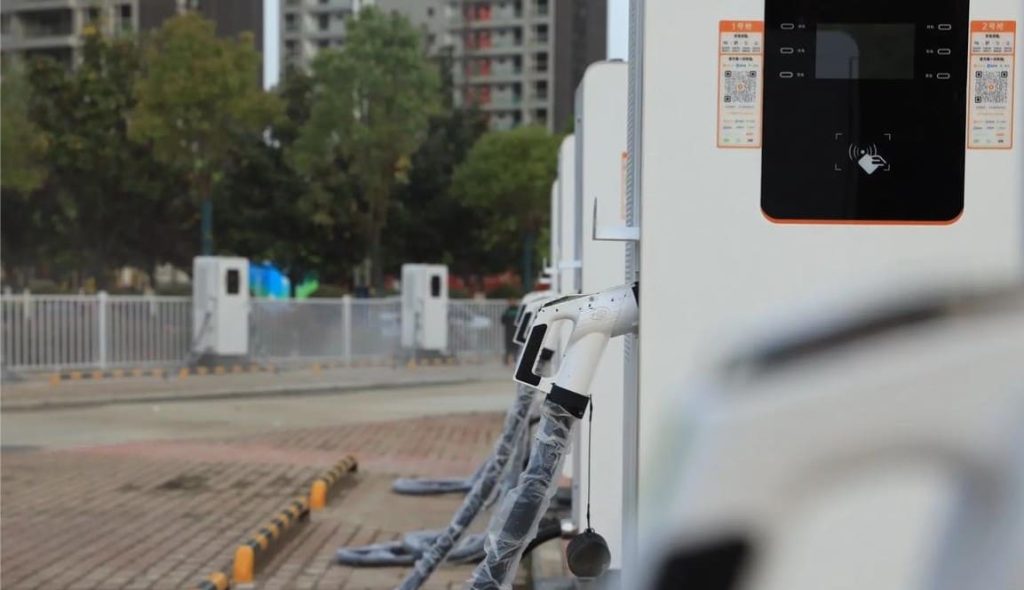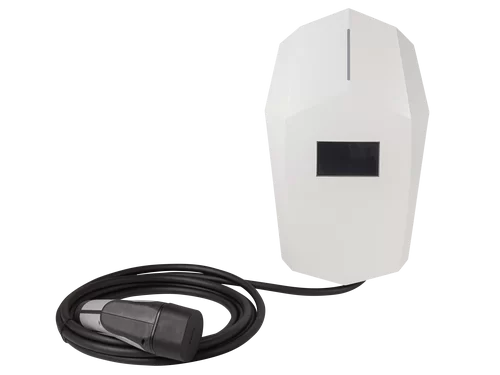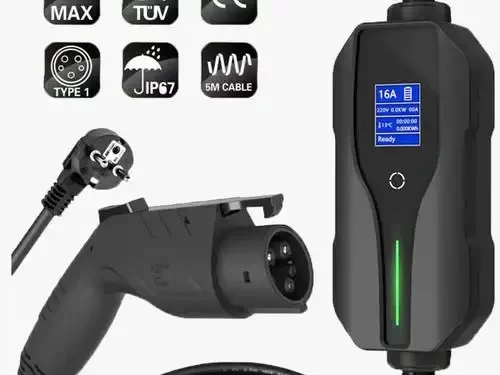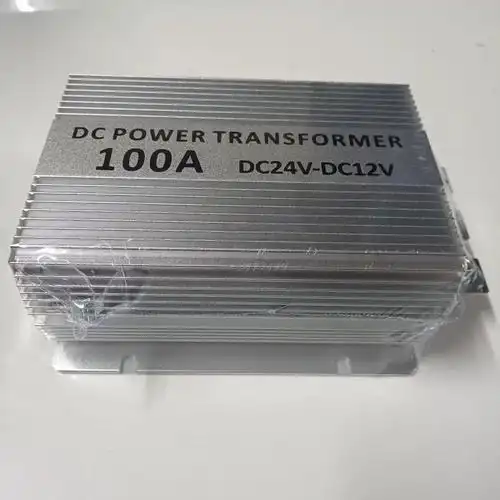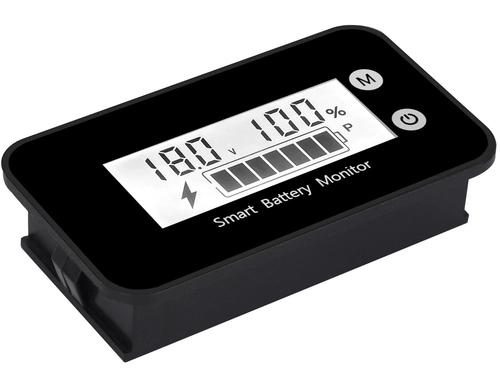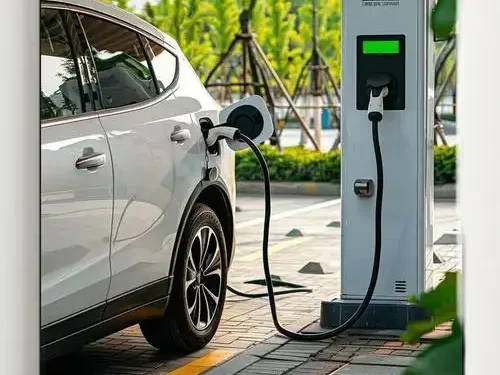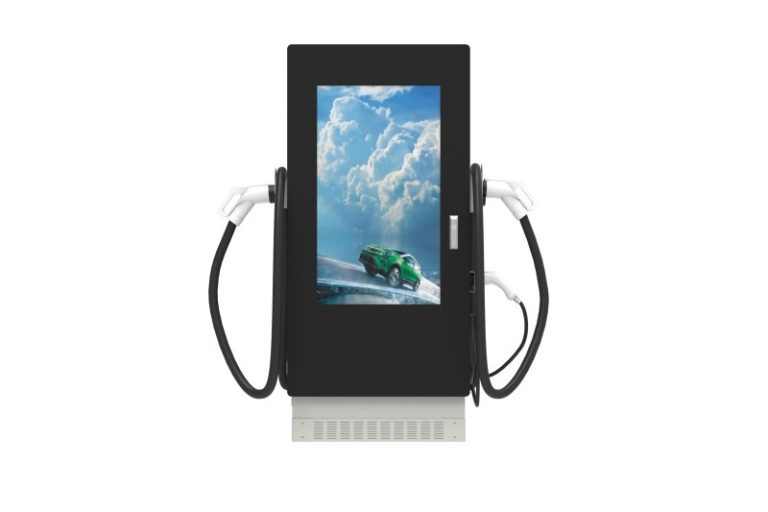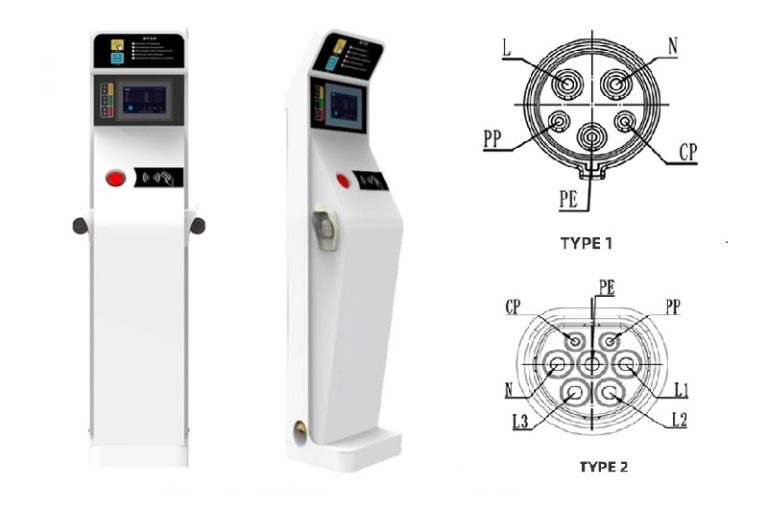480V EV Charger
Specification of 480V EV Charger
Parameters of 480V EV Charger:
| Model | 7750 | 15750 | 20750 | 30750 | 40750 |
| Output Power | 7KW | 15KW | 20KW | 30KW | 40KW |
| Input Voltage | 90-265V | 260-475V | 260-475V | 260-475V | 260-475V |
| Input Connection | L+N+PE | 3P+N+PE | 3P+N+PE | 3P+N+PE | 3P+N+PE |
| Input Current | 32A | 25A | 32A | 45A | 64A |
| Output Current | 20A | 25A/37A | 33A/60A | 50A/100A | 133A |
| Weight | 20kg | 30KG | 35KG | 45KG | 64KG |
| Size(mm) | 545*38*170 | 545*38*170 | 545*38*170 | 645*454*170 | 721*475*232 |
| Name | Parameters |
|---|---|
| Frequency | 50/60 Hz |
| Power Factor | >0.99@rated voltage |
| Efficiency | 95% |
| TFT-LCD Touch Panel | 4.3 Inch touchable screen |
| Auxiliary Power | 12V(24V Optional) |
| Operating Temperature | -2 0℃~+5 0℃(Derating higher than 50℃) |
| Altitude | 2000M |
| IP Level | IP54 |
| Working Humidity | 5~90%RH, no consideration |
| Input Cable Length | 5M(Customization Acceptable) |
| Applicable Standard | GBT20234/EN62196 /EN61851-1, JEVSG105/CHADEMO |
| Communication Protocol | GBT27930/CHADEMO 2.0/ DIN70121, OCPP1.6(Json)/ ISO 15118 |
| Model | 7KW | |
| AC Input | Input Rating | 220Vac±10% |
| AC Input Connection | L2+L3+PE (NEMA,JPS) | |
| Max. Input Current | 32A | |
| Frequency | 50 /60 Hz | |
| Power Factor | >0.99@full load | |
| Efficiency | 95% | |
| DC Output | Output Voltage Range | 200-750Vdc |
| Max. Output Power | 7KW | |
| Max. Output Current | 20A | |
| User Interface | TFT-LCD Touch Panel | Yes(swiping card without TFT-LCD Touch Panel) |
| Push Buttons | Yes | |
| Interface | Yes | |
| Packing | Dimension | W:548 × 378× 160mm U:1500×520× 250mm |
| Weight | Wall:22KG Upright:25KG | |
| Environmental | Operating Temperature | -40~85℃,25℃(TYPE) |
| Humidity | 5%-90% RH, non-condens,ng | |
| Altitude | 2000m | |
| IP Level | IP54 | |
| Mechanical | Cable Length | 5M (CHAdeMO) , 5M (CCS), 5M(GB/T) Customized acceptable |
| Regulation | EN61851-1 | |
| Regulation | Certification | CE , ROHS |
| Charging protocol | CHAdeMO 2.0 / DIN 70121/ISD1S118/IEC618Sl-23,IEC618Sl-24 | |
Introduction of 480KW EV Charger
Welcome to the next generation of electric vehicle charging! We are thrilled to unveil our cutting-edge 480V EV Charger, a true game-changer in the world of sustainable transportation.
As the demand for electric vehicles continues to soar, it has become evident that faster and more efficient charging solutions are essential to support this eco-friendly revolution. That’s where our 480V EV Charger comes in – a revolutionary charging station designed to supercharge your electric vehicle experience.
So, what makes our 480V EV Charger stand out from the rest? Let’s dive into its exceptional features:
- Unmatched Charging Speed: With an incredible power output of 480V, our charger is engineered to rapidly charge your electric vehicle, significantly reducing charging times. Say goodbye to long waiting periods and hello to more time on the road.
- Universal Compatibility: We understand that electric vehicle technology is constantly evolving. That’s why our charger is built to be compatible with a wide range of EV models, ensuring that it meets your charging needs now and in the future.
- User-Friendly Interface: Charging your vehicle should be a hassle-free experience. Our charger boasts a user-friendly interface, making it easy for both seasoned EV drivers and newcomers to use and enjoy its seamless functionality.
- Durability and Safety: Safety is a top priority for us. Our 480KW EV Charger is designed with high-quality, durable materials to withstand various environmental conditions. Rest assured that your vehicle is charging securely and reliably.
- Sustainable and Eco-Friendly: We are committed to sustainability, and our charger reflects that commitment. By choosing electric vehicles and utilizing our high-powered charger, you contribute to reducing carbon emissions and protecting the environment for future generations.
- Smart Connectivity: Stay connected and in control with our charger’s smart features. From remote monitoring to real-time charging status updates, managing your EV’s charging process has never been more convenient.
- Future-Ready: As electric vehicle technology evolves, our charger is ready to adapt. It is designed to support future advancements, ensuring that your investment in sustainable mobility remains relevant for years to come.
Join us in embracing a greener, more sustainable future with our state-of-the-art 480KW EV Charger. Together, let’s drive change, protect the environment, and pave the way for a cleaner, brighter world. Experience the power of sustainable transportation with our innovative EV charging solution today!
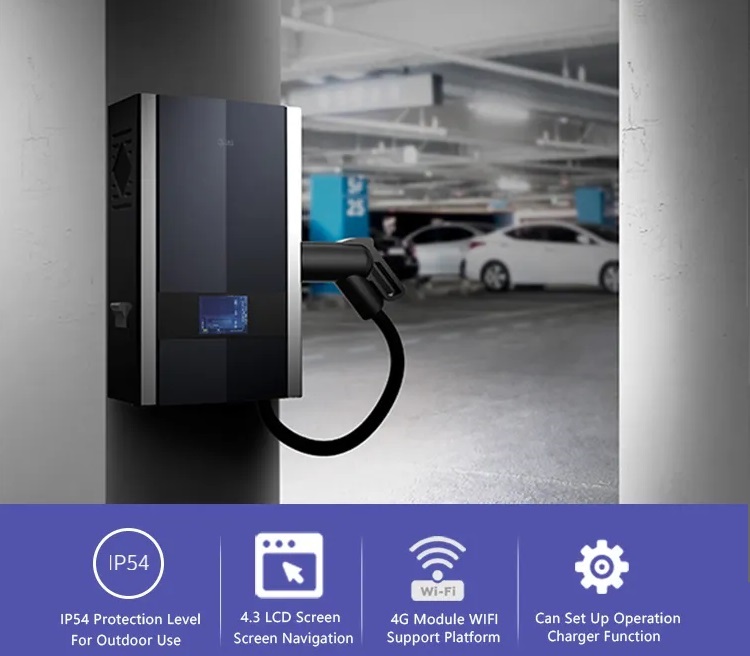
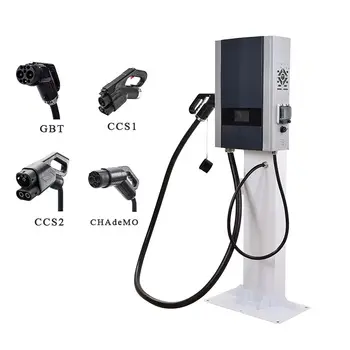
Advantages of 480V EV Charger
| Business Type: | Manufacturer/Factory | Main Products: | EV Charger |
| Number of Employees: | 100 | Year of Establishment: | 2014.05 |
| Production Capacity | 5000Set/Year | After-sales Service: | Technical Support; on-line teach lessons |
| R&D Capacity: | ODM, OEM | Annual Output Value: | US$5 Million – US$10 Million |
| No. of R&D Staff: | 5 | No. of Production Lines: | 6 |
ChargersGO is a professional manufacturer for EV Charger. Our main product including slow charger, fast charger, DC EV Charger, AC EV Charger, commercial EV Charger, charger for home, EV charger level 1, level 2 and level 3 etc. All products in accordance with the China GMP design requirements. And also we have other certifications.
Business Philosophy
“Quality is the main policy of sales” and “integrity is the principle of success” are the business philosophy of our people. We carry out one-year warranty, lifelong maintenance service, with technical consultation and other services, and long-term supply of equipment. Welcome new and old customers to negotiate cooperation!
Small Machine Packing:
Retail Small EV Charger shipped with express.
Wsholesale Small EV Charger packed with export fumigation-free wooden cases, goes with bulk shipment or in container.
When packing small machines for sea shipment, it is important to take measures to ensure that the machines are protected from damage during transit. Here are some general steps that a manufacturer may follow when packing small machines for sea shipment:
- Clean and dry the charger: Before packing, the charger should be thoroughly cleaned and dried to prevent any moisture or debris from causing damage during transit.
- Disassemble the machine: If possible, the charger should be disassembled into its component parts to reduce its overall size and make it easier to pack.
- Wrap the charger in protective material: The charger should be wrapped in a layer of protective material, such as bubble wrap or foam, to protect it from scratches and impact during transit.
- Place the charger in a sturdy box: The wrapped charger should then be placed in a sturdy box that is appropriate for the size and weight of the machine. The box should be made of durable material, such as corrugated cardboard or plywood, and should be able to withstand the rigors of sea transit.
- Add packing material: The box should be filled with packing material, such as packing peanuts or air pillows, to provide cushioning and prevent the machine from shifting during transit.
- Seal the box: The box should be securely sealed with high-quality packing tape to prevent it from opening during transit.
- Label the box: The box should be clearly labeled with the charger’s name, weight, and any other relevant information, as well as the destination address and contact information.
Overall, the goal is to pack the small chargers in a way that will protect it from damage during transit and ensure that it arrives at its destination in good condition. It is important to follow proper packing procedures and use high-quality packing materials to minimize the risk of damage during sea shipment.
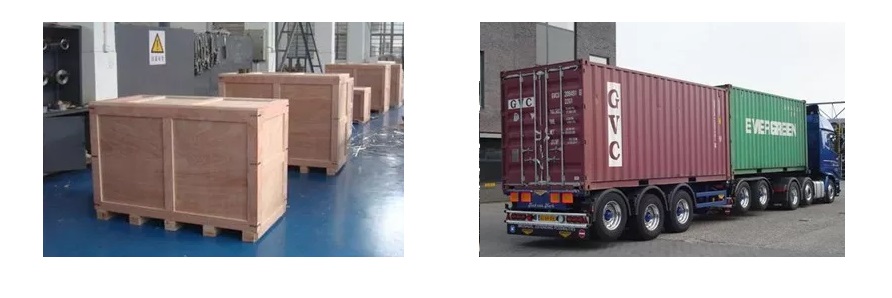
Large Machine Packing:
Packing a large machine for sea shipment can be a complex and challenging task. However, with careful planning and attention to detail, it is possible to pack a large machine for sea shipment in a way that will ensure that it arrives at its destination in good condition. Here are some general steps that a manufacturer may follow when packing up a large machine for sea shipment:
- Clean and prepare the machine: Before packing, the machine should be thoroughly cleaned and prepared. All fluids, such as oil or coolant, should be drained, and any loose or detachable parts should be removed.
- Disassemble the machine: If possible, the machine should be disassembled into its component parts to reduce its overall size and make it easier to pack. Each part should be carefully labeled and numbered to ensure that it can be easily reassembled at the destination.
- Protect delicate parts: Delicate or fragile parts should be wrapped in protective material, such as bubble wrap or foam, to protect them from damage during transit.
- Build a custom crate: A custom crate should be built around the machine to provide a secure and sturdy enclosure. The crate should be made of durable material, such as plywood, and should be designed to fit the machine snugly. The crate should also include braces or supports to prevent the machine from shifting during transit.
- Add cushioning material: The crate should be filled with cushioning material, such as packing peanuts or air pillows, to provide extra protection and prevent the machine from moving or shifting during transit.
- Securely fasten the machine: The machine should be securely fastened to the crate to prevent it from moving or shifting during transit. This may involve using straps, bolts, or other fasteners to hold the machine in place.
- Seal and label the crate: The crate should be securely sealed with high-quality packing tape, and should be clearly labeled with the machine’s name, weight, and any other relevant information. The destination address and contact information should also be clearly marked on the crate.
Overall, packing a large machine for sea shipment requires careful planning and attention to detail. It is important to use high-quality materials and follow proper packing procedures to ensure that the machine arrives at its destination in good condition. A professional packing and shipping company may be consulted to ensure that the machine is properly packed and prepared for sea shipment.
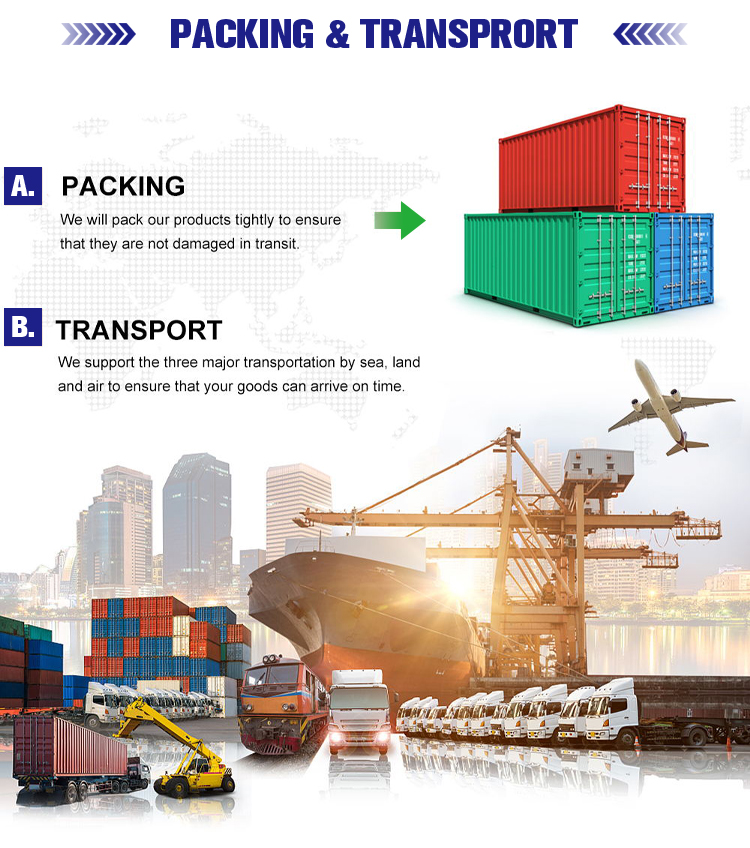

480V EV Charger Wholesale Manufacturer In China
Greetings from the leading wholesale manufacturer of electric vehicle chargers! We take immense pride in presenting our top-of-the-line 480V EV Charger, designed to cater to the growing demand for efficient and reliable charging infrastructure.
As the electric vehicle industry continues to flourish, we understand the crucial role that charging technology plays in supporting this green revolution. That’s why our 480V EV Charger is the ideal wholesale solution, tailored to meet the diverse charging requirements of businesses, fleet operators, and charging station owners.
Related Products
Related Articles
Frequently Asked Questions (More FAQ)
Contact Us
-
What voltage do EV chargers use?
Electric vehicle (EV) chargers typically use various voltage levels depending on the type of charger and the charging speed required. The three common voltage levels for EV chargers are:
120V: This is the standard household voltage in many countries, and some basic EV chargers are designed to operate at this level. However, 120V chargers are relatively slow and are often used for overnight charging or in situations where faster charging is not critical.
240V: 240V chargers are more powerful than 120V chargers and are commonly found in residential settings and public charging stations. They offer faster charging speeds compared to 120V chargers, making them more convenient for everyday use.
480V: This voltage level is used for high-power fast chargers, also known as DC fast chargers or Level 3 chargers. These chargers provide rapid charging for electric vehicles and are typically found in public fast-charging networks along highways, busy urban areas, and commercial locations.
It’s important to note that not all electric vehicles can be charged at all voltage levels. The vehicle’s onboard charger and battery capacity determine the maximum charging rate it can handle. For example, some older EV models might be limited to lower voltage levels, while newer models and high-end electric vehicles can take advantage of faster charging speeds provided by higher voltage chargers.
As the electric vehicle industry continues to evolve, we can expect to see advancements in charging technology, including even higher voltage levels and faster charging rates to further improve the convenience and accessibility of electric vehicle charging. -
What is the highest voltage EV charger?
As of my last update in September 2021, the highest voltage level for electric vehicle chargers is typically 800 volts. These chargers are known as 800V chargers or ultra-fast chargers.
800V chargers are designed to provide extremely high-power charging capabilities to electric vehicles equipped with advanced battery systems. This technology allows for faster charging rates, significantly reducing the time it takes to recharge an electric vehicle.
One of the major advantages of 800V chargers is their ability to cater to the needs of high-end electric vehicles and those equipped with cutting-edge battery technology, such as some luxury electric car models or high-performance sports EVs. These vehicles are built to handle higher voltage charging and can take advantage of the rapid charging speeds offered by 800V chargers.
It’s important to note that the electric vehicle industry is constantly evolving, and there may have been advancements beyond 800V chargers since my last update. Manufacturers are continually pushing the boundaries of charging technology to enhance the convenience and efficiency of electric vehicle charging. Always check the latest information and specifications from reputable sources to stay up-to-date with the most current charging technologies. -
What voltage is level 3 EV charger?
A Level 3 EV charger is also known as a DC fast charger or a high-speed charger. It operates at a voltage level of typically 400 volts or higher. The most common voltage for Level 3 EV chargers is 400 volts, but some fast chargers can operate at even higher voltages, such as 500 volts or 800 volts.
Level 3 chargers are designed to provide rapid charging for electric vehicles, allowing them to replenish their batteries much faster than Level 1 or Level 2 chargers. These chargers are commonly found in public charging stations, along highways, busy urban areas, and commercial locations.
The higher voltage of Level 3 chargers enables them to deliver a significant amount of power to the electric vehicle’s battery, resulting in faster charging times. With Level 3 chargers, EV drivers can add a considerable range to their vehicles in a short period, making them ideal for long-distance travel and reducing downtime for electric vehicles in commercial or fleet applications.
It’s important to note that the charging speed of a Level 3 charger also depends on the electric vehicle’s capability to handle the high charging power. Some electric vehicles are designed to support faster charging rates, while others may be limited to lower charging speeds, even when connected to a Level 3 charger. Always refer to the vehicle’s specifications and the charger’s capabilities to ensure compatibility and optimal charging performance. -
What size wire for a 48 amp car charger?
For a 48 amp car charger, you will need a wire size that can handle the electrical load safely and efficiently. The appropriate wire size is determined by the amperage of the charger and the length of the wire run. Using the correct wire gauge ensures that the wire does not overheat and minimizes power loss during charging.
To determine the appropriate wire size, you can use the American Wire Gauge (AWG) standard. For a 48 amp car charger, the recommended wire size is typically AWG 6 or larger. AWG 6 wire is capable of safely carrying 48 amps of current for most charging scenarios.
Keep in mind that the length of the wire run also affects the wire size needed. For longer wire runs, a larger wire gauge might be necessary to account for voltage drop and maintain charging efficiency.
It is essential to consult with a qualified electrician or an electrical professional when installing an EV charger and selecting the appropriate wire size. They can assess your specific installation requirements and ensure that the wiring is up to code and meets safety standards for charging your electric vehicle. Electrical work can be hazardous if not done correctly, so it’s crucial to seek professional advice to ensure a safe and reliable charging setup. -
Are you a factory or trading company?
We are a professional manufacturer of new and sustainable energy applications for over 20 years.
-
What is the warranty?
Warranty period is 12 months. In this period, we will supply technical support and replace the new parts by free,customers are in charge of delivery.
-
What is the packing method?
Generally, we pack our goods in brown cartons. If you have legally registered patent, we can pack the goods in your branded boxes after getting your authorization letters.
-
What is your terms of payment?
T/T 50% as deposit, and 50% before delivery. We’ll show you the photos of the products and packages before you pay the balance.
-
What is your terms of trade?
EXW, FOB, CFR, CIF, DAP,DDU,DDP
-
How about your delivery time?
Generally, it will take 3 to 7 working days after receiving your advance payment. The specific delivery time depends on the items and the quantity of your order.
-
Can you produce according to the samples?
Yes, we can produce by your samples or technical drawings. We can build the molds and fixtures.
-
What is your sample policy?
We can supply the sample if we have ready parts in stock, but the customers have to pay the sample cost and the courier cost.
-
Do you test all your goods before delivery?
Yes, we have 100% test before delivery.
-
What’s the difference between Movable Charger and Wallbox Charger?
In addition to the obvious appearance difference, the main protection level is different: wallbox charger protection level is IP54, available outdoors;And the Movable Charger protection level is IP43, rainy days and other weather can not be used outdoors.

